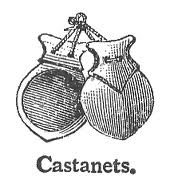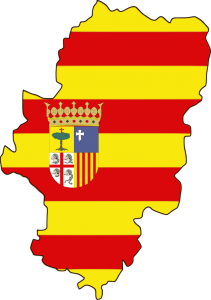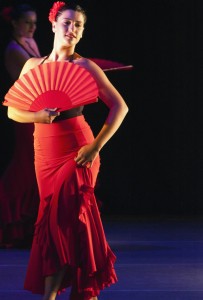Slow And Steady Wins The Race

Since the Fiestas del Pilar, my project has been moving along slowly but steadily. I have been to the local library to research the history and origins of the Jota and have enrolled in a Jota dance class, and attended a couple of lessons so far.
It is a very difficult dance to learn, you have to think about your feet, arms, timing and you have to use castanets all at the same time. It makes my arms ache but I am sure with practice I will get better. I have managed to find out some things about the dance from my research and from casual conversations with people.
Firstly, I have discovered that there are many different variations of the dance, it is not simply one Jota that everyone dances, each town in Aragón has its own Jota dance and some have bolero dances as well which incorporate a section of Jota dancing such as the Bolero de Caspe (Caspe is a town in Aragón).
The clothing and props also depend on the town. For example, Jotas from the northern sub-region of Aragón towards the Pyrenees wear thicker clothes; the women wear long flowery dresses and shawls, whereas Jotas from the southern sub-region will wear thinner clothes as it is warmer. There are also noticeable differences in the dances from each region, in the north the Jota is slower and has a French influence, whereas in the Zaragoza region the Jotas are more fast-paced and the dancers’ arms are always elevated.

This has made it difficult to define what the Jota is as there are so many variations, and it is also impossible to know the exact origins of the dance. So the background history and explanation of the dance for my project will be difficult to write.
It has also come into view that the Jota is danced in lots of other regions in Spain, not just in Aragón. In fact, it is danced in more regions than flamenco. This is interesting as flamenco is very famous and has become the stereotypical symbol of Spain. I would like to therefore discover why it is more famous than the Jota when the Jota is danced in more regions.
I haven’t started my interviews yet, but I plan to start them after Christmas. I am going to interview some of the people from the dance class, students and teachers, people from other dance groups, and some of my friends and colleagues who are from Aragón. I want to know what they think about the Jota, why they dance or don’t dance the Jota, if they think it would be a better symbol of Spain and why they think flamenco is more famous.

There is a lot of controversy over flamenco, as many Spanish people believe the flamenco of today is not the traditional flamenco, it has been commercialised for tourists. I would like to know how people in Aragón would feel if the Jota became commercialized like flamenco. Maybe it is better that it is not famous? Or do people in Aragón feel strongly about their dance and want it to become more well-known? Is the Jota a more accurate symbol of Spain than flamenco?


Leave a Reply